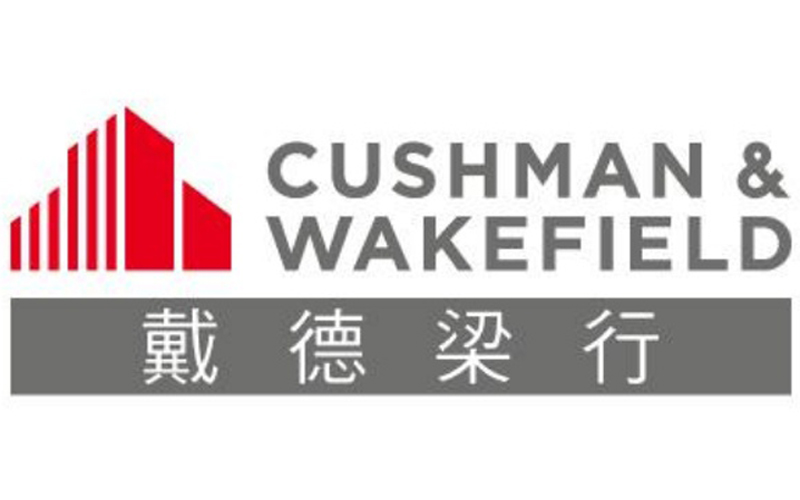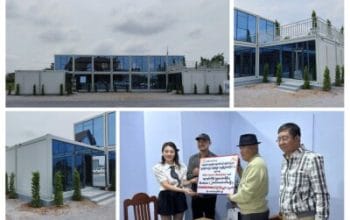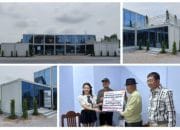• Grade A office rents in core districts fell sharply in Q1 2020 with those in Greater Central and Wanchai/Causeway Bay dropping by 4.0% and 5.2% respectively from last quarter, under the impact of the COVID-19 pandemic and a subdued economic outlook
• Retail market indicators plummeted, with the F&B sector the hardest hit by the pandemic that could see around 1,000 restaurants close this year.
CHINA – Media OutReach – 7 April 2020 – Grade A office rental declines accelerated in all office submarkets in Q1 with the core areas being the hardest hit as leasing demand weakened in the face of the COVID-19 pandemic which drove local business and economic performance into disarray.
The retail leasing market bore the brunt amid a severe drop in tourist arrivals, retail sales, and customer foot traffic due to the border closures and other containment measures.
For the second consecutive quarter, net absorption in the overall Grade A office market fell into negative territory, to -524,947 sq ft in Q1, as compared to -377,990 sq ft last quarter. Limited leasing demand in a nearly frozen market resulted in the largest quarterly shrinkage in net absorption in 18 years, with demand shrinking the most in the finance, insurance and co-working sectors.
Mr Keith Hemshall, Cushman & Wakefield’s Executive Director, Head of Office Services, Hong Kong, commented, “In addition to corporations holding off on any expansion plans in the face of uncertainties or due to cost constraints, the pandemic has forced a trial of remote or flexible working. With this as an option, some companies will consider the viability of cutting leased space to save costs, while maintaining operations without compromising the level of productivity and service quality. We expect these considerations will further undermine leasing demand and the amount of net absorption in the near future.”
As leasing demand shrank, overall availability climbed to 10% or the highest level in a decade, with Kowloon West and Kowloon East at the high end, recording availability of 14.6% and 14.2% respectively. Meanwhile, Grade A rents which have been softening since Q2 2019 saw the rate of decline accelerate in Q1 2020.
This was most apparent in the core submarkets of Greater Central, Wanchai/Causeway Bay and Greater Tsimshatsui where rents fell by between 4.0 and 5.7% quarter-on-quarter. Both Prime Central and Wanchai/Causeway Bay recorded double-digit drops in rents from a year ago. Even in Hong Kong East where availability was the lowest among the submarkets, at 5.3%, rents in Q1 fell slightly, by 1.2% quarter-on-quarter.
Mr John Siu, Cushman & Wakefield’s Managing Director, Hong Kong, commented, “With overall availability reaching the 10% benchmark, landlords will become more concerned about back filling the vacant space in their buildings. The market is becoming more tenant-friendly, and demand is expected to remain weak under the impact of the pandemic and potential global economic recession. We forecast overall availability to remain in double digits for the remainder of 2020, pushing down rents by 13-18% overall for the full year and 15-20% down in Greater Central.”
In many ways the COVID-19 pandemic has intensified the negative impacts on the local retail market caused by the social unrest in 2019. Due to travel restrictions, quarantine requirements and border control measures, tourist arrivals dropped 98% year-on-year to a total of just 199,123 in February. During the first two months of 2020, retail sales plunged across the board, led by declines in jewelry & watches (41.6%) and medicines & cosmetics (32.3%).
The adverse effect on high street rents was immediate: Central rents plummeted by 20% quarter-on-quarter in Q1 while in Causeway Bay, Tsimshatsui and Mongkok they fell by 15% in the quarter. In the non-core areas of Tuen Mun and Yuen Long rents fell by around 10%. Vacancy rates rose in all core areas, led by a jump of 7.3 percentage points to 20% in Mongkok — a decade high — while vacancy rates in Causeway Bay, Central and Tsimshatsui climbed to 5.3%, 14.2% and 4.8% respectively.
The F&B sector was undoubtedly hard hit by the pandemic. Restaurant receipts are forecast to shrink from HK$26.0 billion to HK$23.6 billion in the span of Q1 (down by 9.2%, or 25.1% year-on-year). Also, it is worth noting that over the past decade from 2008 to 2019, the number of F&B operators (in terms of the number of licenses) has grown at a faster rate than that of restaurant receipts, by 50% as compared to 44%. The abrupt plunge in F&B business today suggests the current volume of operators is no longer sustainable amid the increased competition, and it is expected that around 1,000 operators may have to close their business within this year.
Mr Kevin Lam, Cushman & Wakefield’s Executive Director, Head of Retail Services, Hong Kong, said, “Due to the double whammy of the social unrest and COVID-19 outbreak, the retail business is likely to remain extremely bleak over the next few months. The situation remains very fluid, but we expect that once the pandemic is over, retail sales and the F&B business will return to a similar level as in January, a point when the market impact from the social unrest had subsided and that from the pandemic had yet to be seen.”
About Cushman & Wakefield
Cushman & Wakefield (NYSE: CWK) is a leading global real estate services firm that delivers exceptional value for real estate occupiers and owners. Cushman & Wakefield is among the largest real estate services firms with approximately 53,000 employees in 400 offices and 60 countries.
Across Greater China, there are 22 offices servicing the local market. The company won four of the top awards in the Euromoney Survey 2017 and 2018 in the categories of Overall, Agency Letting/Sales, Valuation and Research in China. In 2019, the firm had revenue of $8.8 billion across core services of property, facilities and project management, leasing, capital markets, valuation and other services.












